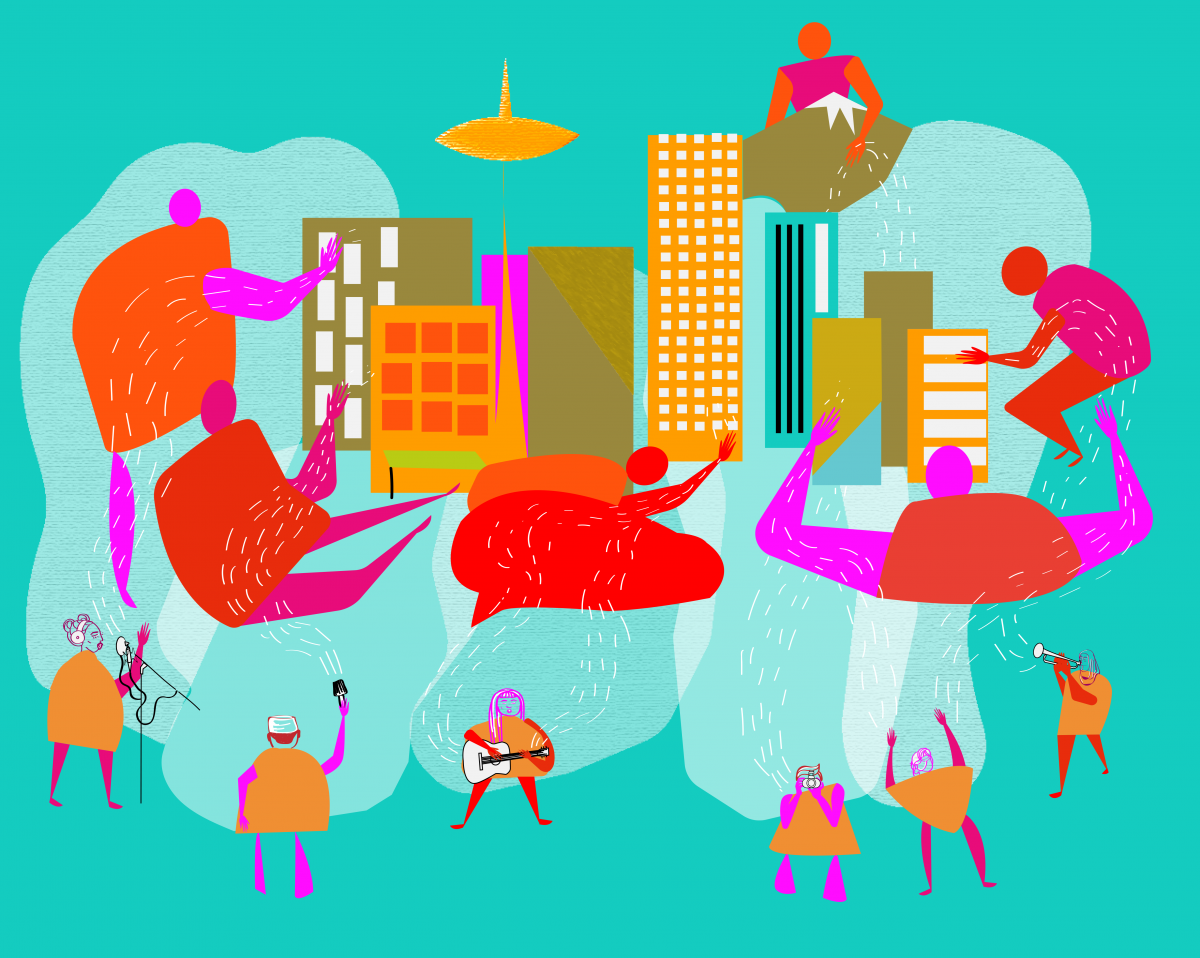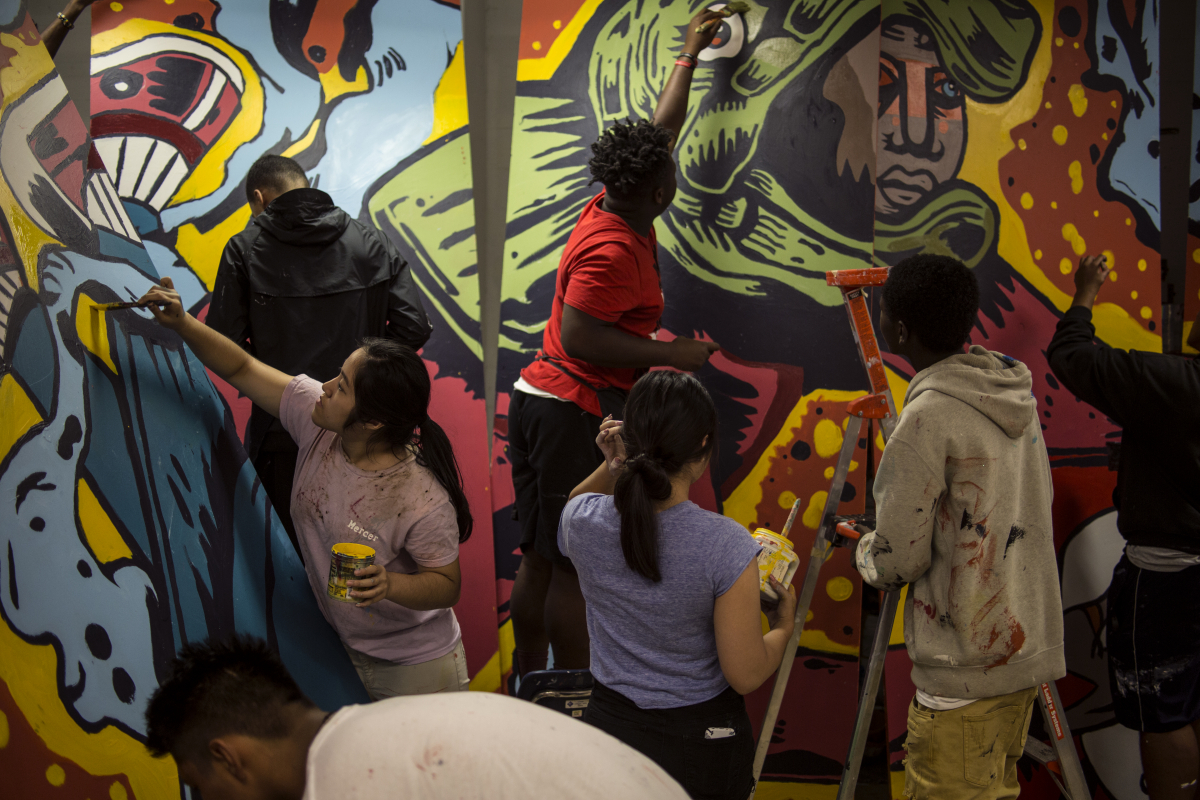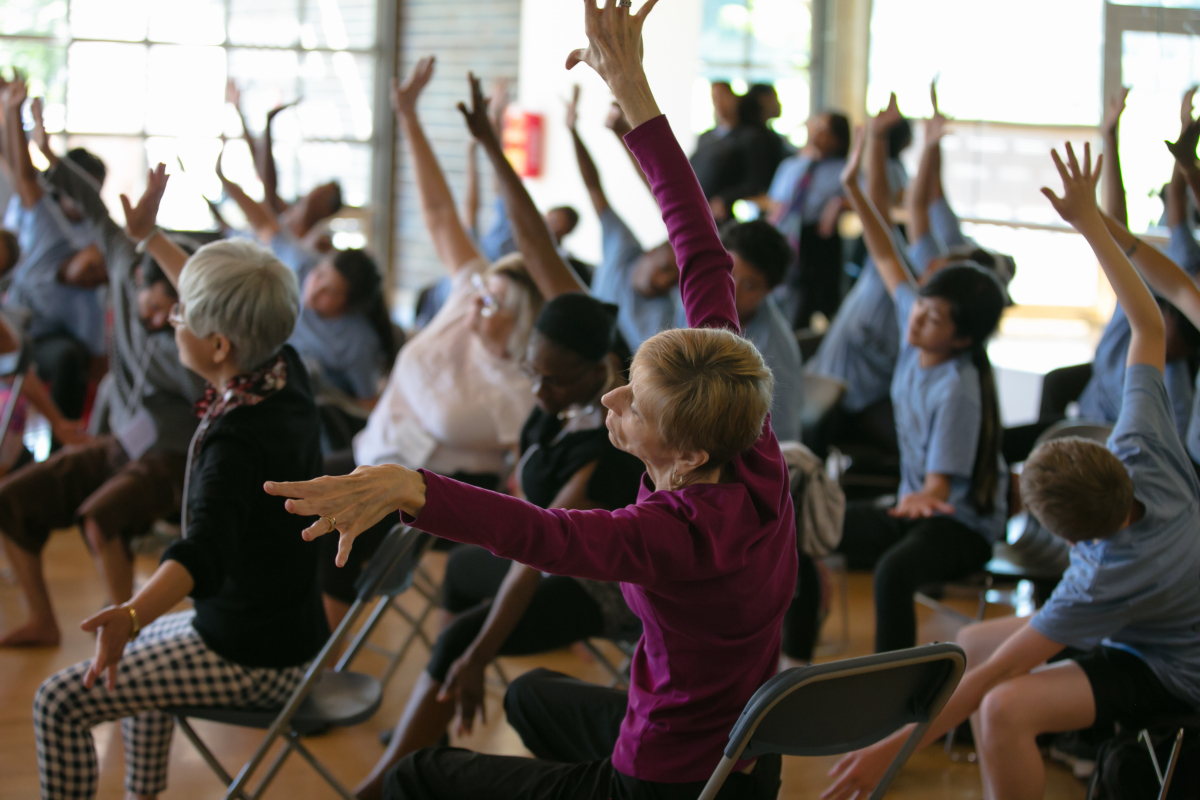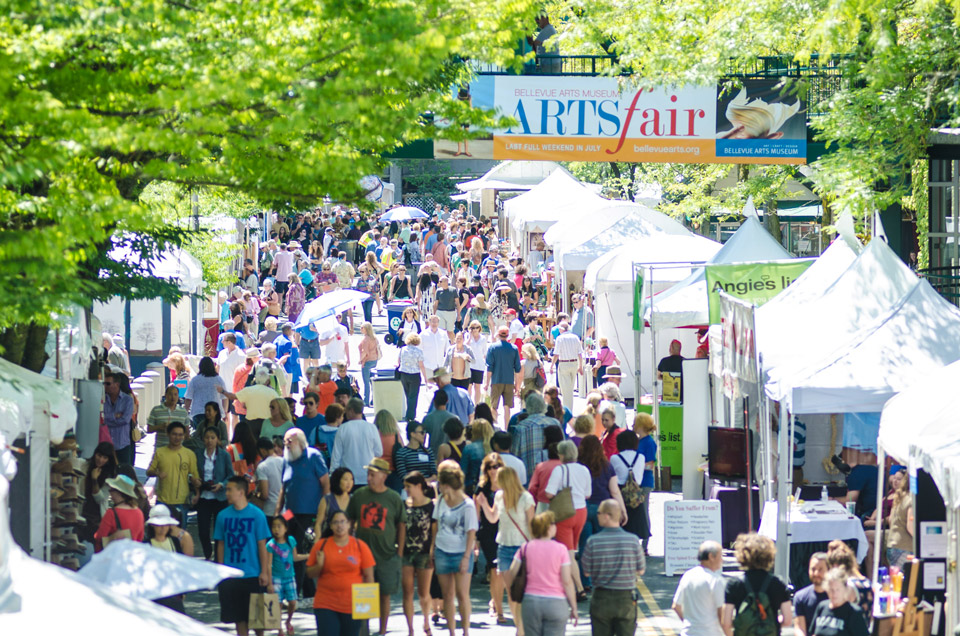The Art of Community Building: Leveraging the Social Impact of the Arts
Posted by Apr 26, 2019

Ms. Sarah Sidman
This is a pivotal moment for Seattle. King County, Washington is experiencing rapid growth, attracting new companies and a diversifying, expanding population. We are also grappling with pressing challenges around education, homelessness, healthcare and mental health, workforce development, and income inequality. The benefits of our region’s growth are not broadly shared, and inequities persist. To ensure a healthy and equitable future, we need to find new mechanisms to solve these interconnected, complex challenges.
To inject insights about how arts can play a role in addressing these needs, ArtsFund, a Seattle-based grantmaking and advocacy nonprofit, recently published the Social Impact of the Arts Study: How Arts Impact King County Communities. Defining “social impact” as the ability to advance community priorities, we focused on key areas where arts intersect with our region’s challenges. We center on equity throughout, examining how arts can lessen the opportunity gap. Over the past ten years, a significant body of research that connects art to positive community outcomes has emerged. We reviewed over 150 of these resources, conducted a landscape scan of 200 arts nonprofits in King County, and profiled ten regional case studies.
Our report offers a new way of looking at things—how investment in the arts is a proactive, strategic investment in community—with potential implications for advancing and amplifying the social impact of the arts in other localities. Framed by the data, let’s look at five key ways arts advance positive and equitable social outcomes.

Promoting Youth Development and Education
Already in 2019, Seattle Times editorials have given repeat coverage to the urgent need to provide students employable skills, mental health support, and early learning, and to enhance aid for youth involved in social services. Sustained arts involvement for youth can help directly meet these needs. Research clearly shows involvement in arts can improve academic and social outcomes for youth across socio-economic status and across all ages, leading to higher test scores, improved critical thinking skills and executive function, and a better ability to regulate emotions. This is especially the case for youth from low-income backgrounds. Knowing low income youth have the most to gain, and yet often have the least exposure to arts programs, suggests that creating this access will help close the opportunity gap.
In our region, over 80% of arts nonprofits offer programs for youth and education. One example, Urban Artworks, provides justice-involved youth on probation with job training and life skills as they install murals throughout the region. A staggering data point: 83% of Urban Artworks youth don’t re-offend. For these kids trying to move out of the juvenile justice system, art is creating an offramp from the school-to-prison pipeline.

Promoting Health and Wellness
We are living longer, but are we living better? In and out of medical settings, arts can improve individual and community health, reducing stress and anxiety and helping cope with trauma and symptoms of disease. Nationwide, 45% of medical institutions offer some sort of arts program, primarily doing so to benefit patient recovery.
Most mental-health issues begin to emerge in adolescence. Young people participating in local programs like Seattle Arts & Lectures “Writers in the Schools” program state, “It saved my life.” The idea that a high-quality outlet for self-expression can save lives isn’t exaggeration when suicide rates and depressive feelings reported by teens are increasing at shocking pace.
Aging adults, and those with diseases that cause dementia, show particularly favorable health impacts. For an aging person, social isolation has a negative health impact equivalent to smoking 15 cigarettes a day. Programs like Seattle Theatre Group’s Dance for PD® connect people through dance, reducing isolation. Arts can be a powerful antidote, leading to longer lives, better lived.

Fostering Neighborhood Vitality
Consider the stakes if, as our population grows, we aren’t open to cultures and perspectives different than our own. When arts are present, there’s documented increase in neighborhood livability, community identity, and social inclusion. This builds community cohesion and helps bridge cultural divides, outcomes especially resonant in a region growing as quickly as ours. Cities with high concentrations of art also track improved child welfare outcomes, along with reductions in crime and poverty. And the results are magnified in low income neighborhoods.
Here’s where local examples like Path with Art come in. Working with 750 homeless and formerly homeless adults each year, Path with Art uses art and music to support and empower vulnerable populations, bridge divides, foster trust, and transform lives. In this case, art also provides an entry point for connection to social services.
Adding a Competitive Edge to Business
Businesses also benefit from strong arts sectors. Creative thinking is fundamental to our growing economy. Arts build 21st century skills central to developing local talent and the future of work. King County is known to host an innovative corporate landscape, and our local businesses benefit from an arts-educated pipeline of workers and rely on thriving arts sectors to attract and maintain a creative workforce. From a competitive perspective, places that invest in and promote arts thinking through their education and workforce systems, and that are host to a range of arts amenities and an openness and tolerance of ideas, have a distinct advantage in the future economy.
Partnering across sectors
Arts aren’t working in isolation. In our area, more than 4 out of 5 arts organizations are working together with schools, refugee and immigrant organizations, hospitals and clinics, senior centers, city departments, environmental organizations, and many more. For instance, in addition to popular mainstage performances, Jet City Improv works year-round with a youth substance use disorder treatment center, and Seattle Arts and Lectures partners with Seattle Children’s Hospital to bring teaching artists to hospitalized children and teens.
The results are clear: when art is integrated with another intervention and in complement to traditional approaches to social issues, it makes people more successful.
Our research uncovered a disconnect between public perception of the value of the arts and their impact. While 79% of King County residents believe arts benefit their personal wellbeing, and 60% cite them as a key factor in their decision to live in the area, only 28% think arts and culture promote social change at a community level. Examining the social impacts of the arts brings attention to new possibility, and to an aspect of solving community challenges that isn’t broadly acknowledged—the public benefits of the arts. If we are to meet our most pressing challenges, we will need to find a way to leverage and expand the powerful social impacts of the arts so that more people and more communities can benefit.

ArtsFund’s study was a product of cross-sector partnership and support, including funding from: The Boeing Company, Seattle Foundation, 4Culture, the Glenn H. Kawasaki Foundation, King County, Seattle Office of Arts & Culture, Swedish, Peter and Susan Davis, Peter Horvitz, the Nesholm Family Foundation, Carlo and Lalie Scandiuzzi, Starbucks Coffee Company, the Tagney Jones Family Fund, and an anonymous donor. Support for the Social Impact Study Community Conversations is provided by: 4Culture, The Boeing Company, King County, Sound, and Seattle Office of Arts & Culture.
ArtsFund is a Seattle-based non-profit that has been strengthening the Puget Sound community by supporting the arts through leadership, advocacy and grant-making since 1969. Our study is designed to be replicable across geographies and impact areas; more information, and open-sourced process documents, available at www.artsfund.org/socialimpact.
Americans for the Arts’ Arts + Social Impact Explorer, examining the themes mentioned here and more, is available at http://www.americansforthearts.org/socialimpact.






